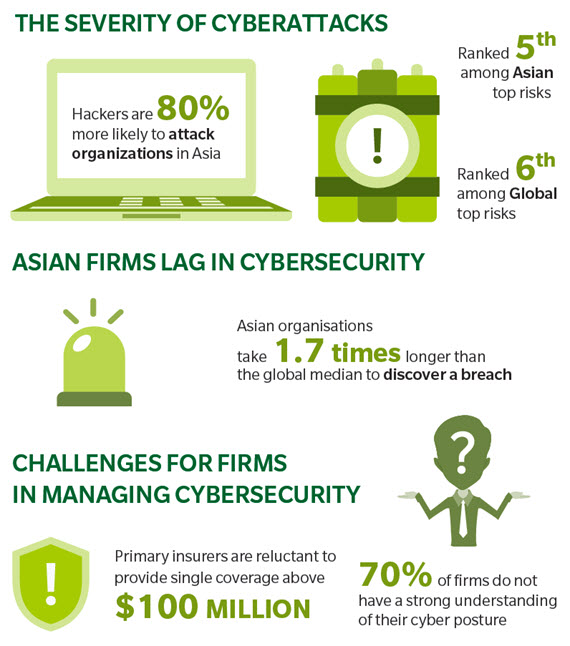Cybercrime is becoming a greater risk in doing businesses in Asia-Pacific (APAC) as compared to the West. Rapidly growing connectivity and the accelerating pace of digital transformation expose the APAC region, and make it particularly vulnerable to cyber exploitation. Evidently, according to the 2017 edition of the Global Risks Report, cyber concern around the likelihood and impact of technological threats has sharpened among business executives in APAC, and cyberattacks are ranked among the top 5 risks of doing business in the region.
To complicate matters further, the lack of transparency in the region renders weak cyber regulations and enforcements by authorities, as well as low cyber awareness and security investments among corporations.
Historically, data breach notification laws have been lacking across the region, bringing forth one key insight – governments and policy-makers have yet to recognize the importance of transparency in the battle against cyberattacks. Moreover, the lack of transparency potentially shrouds perceptions and alters behaviors of corporations, resulting in inaction or inadequate mitigation efforts. The global cyber insurance market is dominated by the US due to the mandatory breach notification laws that raise transparency and awareness levels among key stakeholders. Cyber insurance take-up rates in APAC remains negligible today. To mitigate cyber risk, it is essential to raise the degree of cyber transparency in the region.
Besides addressing the inevitable challenges related to government actions and corporate reactions to push for transparency, there must also be buy-in for comprehensive cyber risk strategies and fair collaboration among various stakeholders to build cyber resilience within the cybersecurity ecosystem.

